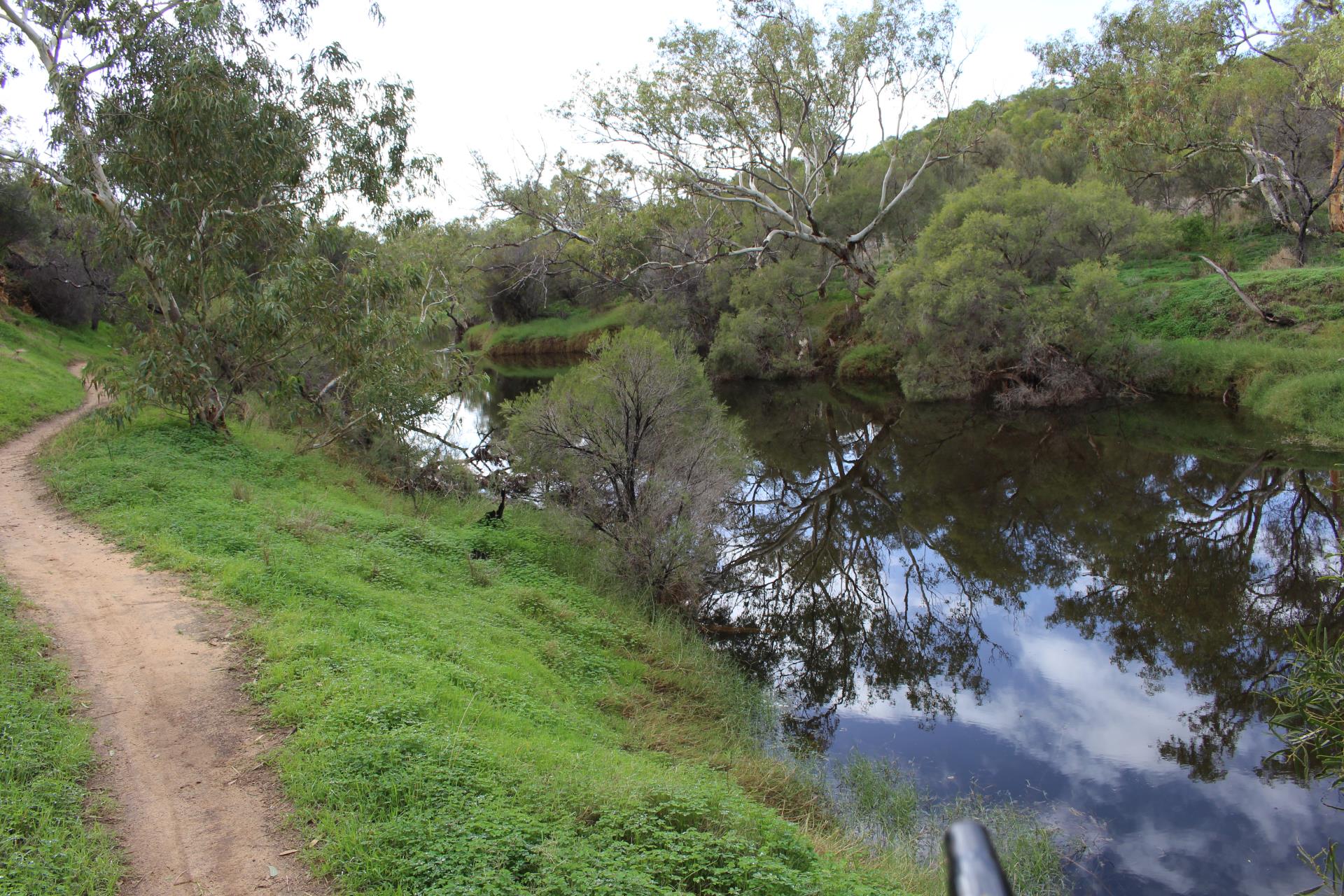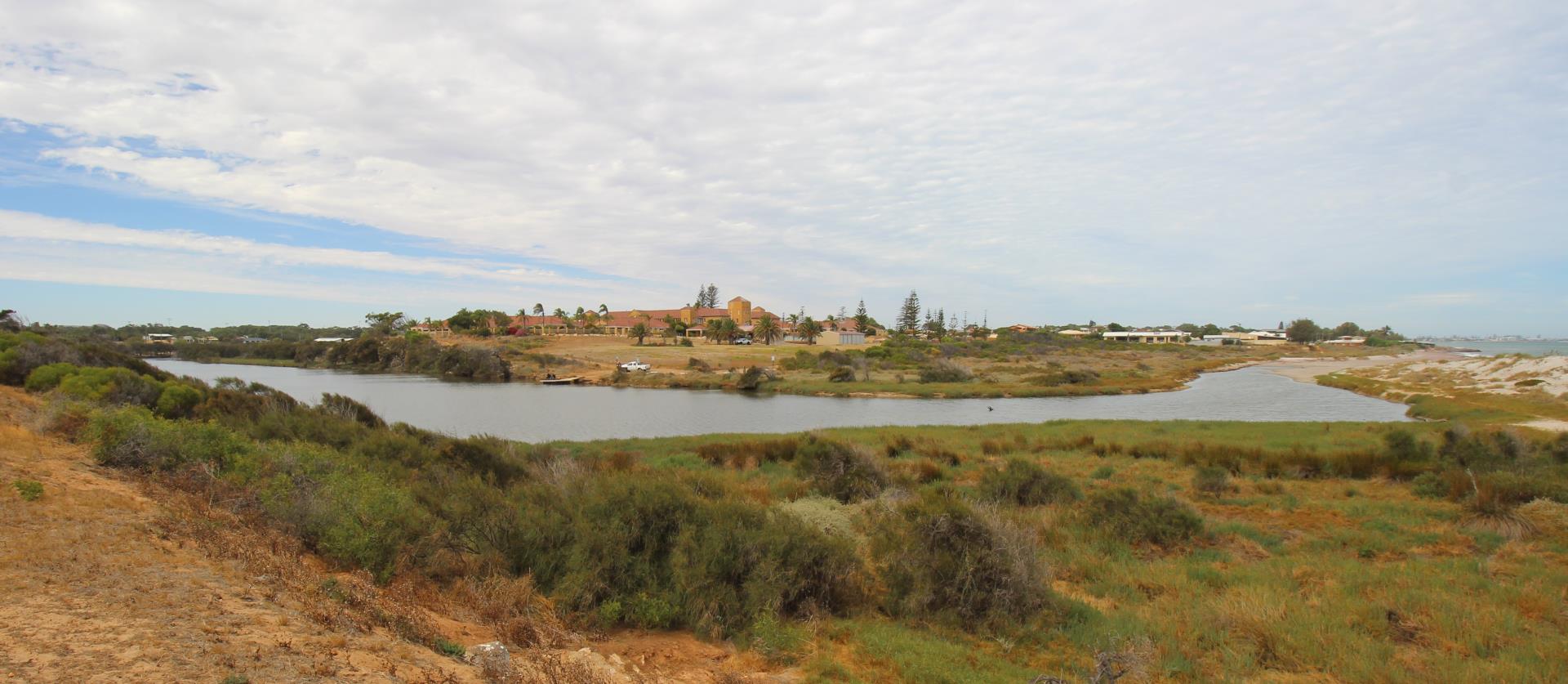Chapman River Regional Park
The Chapman River Regional Park is an area of high conservation significance. This reserve has important conservation value, high visitation levels and a variety of infrastructure and trails. Covering approximately 364ha this reserve begins at Cutubury Reserve at Moonyonooka and ends downstream at the Chapman Estuary River mouth.
The Chapman River Regional Park consists of a variety of soil types including limestone, red loam, clay and yellow sand, resulting a high diversity of locally endemic plant species.
A diverse array of flora and fauna are found within the Chapman River Regional Park. More here
Information on how the City of Greater Geraldton manages pests and feral animals here

The Chapman River Estuary
The Chapman River Estuary area at Sunset Beach runs from the Chapman Road bridge downstream to the river mouth, forming a small section of the much larger Chapman River Regional Park. The Chapman River Estuary Reserve, part of the Chapman River Regional Park, is a very popular recreation spot for walking and cycling along the river trail, bird watching, and fishing. The Chapman River is a culturally significant Aboriginal heritage place and the site of a federally listed Threatened Ecological Community. The estuary is home to migratory shore birds, turtles and other wildlife whose habitat needs to be maintained and protected. More on native plants and animals here
The Chapman River mouth is home to Subtropical and Temperate Coastal Saltmarsh Ecological Community, which is nationally listed as a ‘Vulnerable’ Threatened Ecological Community (TEC) under the EPBC (Environmental Protection and Biodiversity Conservation) Act 1999.
At the river mouth, this saltmarsh fills a vital ecological role, providing a rich and biodiverse habitat, which supports intricate food webs, filters riverine water prior to entering the ocean (thereby preventing algal blooms and eutrophication), performs a vital source of carbon sequestration, enhances riverbank stability and provides protection from storms and waves.

The Chapman River Estuary Reserve Action Plan
The City of Greater Geraldton has recently developed the Chapman River Estuary Reserve Action Plan.
The aim of the Chapman River Estuary Reserve Action Plan is to provide a framework, informed by stakeholder and community input, to protect the ecological, social and cultural values of the site.
The Action Plan aims to protect the ecological, cultural, hydrological, and spiritual assets of the Chapman Estuary through the implementation of restorative activities such as regular environmental monitoring, rehabilitation works, weed and pest control, and access restriction. This will enable low-impact activities to continue to be enjoyed by the public, while conserving and protecting the area's ecological and cultural assets.
Newsletter: Chapman Estuary Times
Keep up to date on the latest happenings in the Estuary and the status of the recommended actions identified in the Chapman River Estuary Reserve Action Plan. If you would like to receive the newsletter by email please send your request to: environmentalplanning@cgg.wa.gov.au
October 2023 Issue
December 2023 Issue
February 2024 Issue
April 2024 Issue
Chapman River Regional Park trails
There are a variety of trails in the Chapman River Regional Park to suit walkers, mountain bike riders and horse riders.
Options range from a long 11km loop trail to short 1km trails. Trails take in the wildflowers, the estuary, the river, with some rocky and steep sections for the more experience walkers.
Trail way markers can be found throughout the Chapman River Regional Park to direct trail users.
Chapman River Regional Park Trail Network brochure
Please leave only footprints, take only photos and stay on the trails. Dogs must be kept on a leash. It is illegal to take flora without a permit.
Walking trail maps are available from the Civic Centre, Visitor Centre and Geraldton Regional Library.

Chapman River – Further Resources
Local Biodiversity Strategy
Local Biodiversity Strategy Appendix
Chapman River – How you can help here